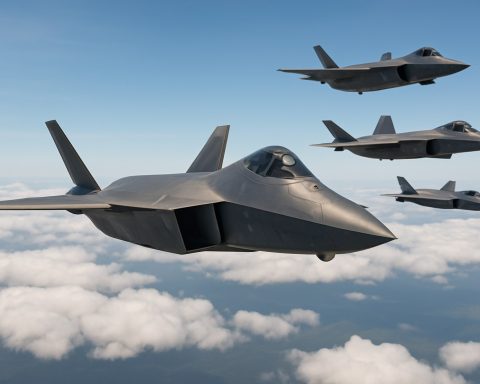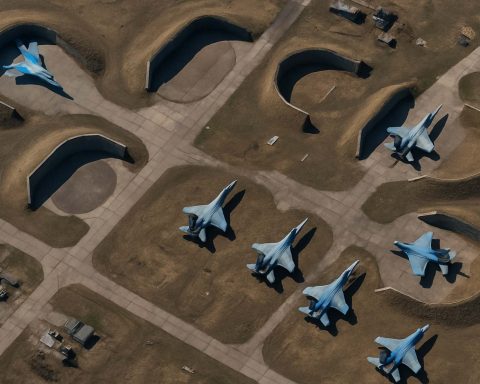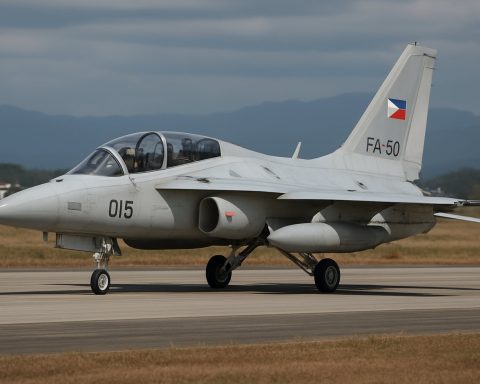- The J-10 ‘Vigorous Dragon’ highlights China’s advanced aeronautical ambitions, impressing global air forces with its capabilities.
- Introduced in 1998, the J-10 evolved over 14 years, overcoming technological challenges, originally relying on Russian engines.
- The modern J-10C, launched in 2018, features the indigenous Shenyang WS-10 engine and advanced systems, enhancing precision strike and electronic warfare abilities.
- Costing around $40-50 million per unit, the J-10C offers countries a competitive alternative to Western aircraft with fewer political constraints.
- Pakistan first acquired the J-10C, enhancing its air force capabilities and strategic positioning with regional and global implications.
- China eyes new markets in the Middle East and Africa, with nations like Azerbaijan and Iran expressing interest in the J-10C.
- The J-10C’s presence contests Western fighters like the F-16, showcasing China’s growing aerospace influence.
Above the cerulean expanse of the skies, the mighty roar of the J-10 ‘Vigorous Dragon’ echoes—a testament to China’s aeronautical aspirations and prowess. Born from the ambitions of the 1980s, the J-10 exudes a charisma that has captivated not only the Chinese People’s Liberation Army Air Force but also intrigued air forces worldwide.
Climbing beyond expectations with its maiden flight on March 23, 1998, the J-10 opened a new chapter for China, etching its presence on the global map of aviation technology. Back then, it was a bold leap, comparing favorably to the United States’ F-16 and the Soviet Union’s MiG-29. The tale of its inception is one of resilience—a 14-year odyssey that saw its early design philosophy constrained by technological hurdles and dependent on Russia’s Saturn-Lyulka AL-31 engines.
Yet, from these challenges emerged a remarkable aircraft. Its modern incarnation, the J-10C, has soared to new heights since its 2018 debut. Enhanced with the indigenous Shenyang WS-10 engine—a leap forward in China’s engineering—the J-10C bristles with advanced technologies: an imaging infrared seeker, air-to-air missiles, and cutting-edge radar capabilities. Its capacities for precision strikes and electronic warfare have rendered it a formidable adversary.
Beijing’s ambition extends beyond its borders. Following its induction into the Pakistan Air Force, where it shares the skies with the formidable F-16s, the aircraft models a versatile choice for nations seeking high-caliber combat capability without Western political strings. At a competitive price point of approximately $40-50 million per unit, the J-10C beckons countries keen on modernizing their aerial combat fleets, teasing markets from the Middle East to Africa.
Pakistan was the pioneer in embracing the J-10C, hailing its induction as a revolutionary moment. This strategic acquisition amplified Pakistan’s air capabilities, optimizing networked engagements and bolstering operational tactics. Moreover, the flypast at Pakistan’s national parade reverberated not just as a spectacle but as a message—this Dragon intends to leave a mark.
China’s determined courting of international buyers sees Azerbaijan and Iran eyeing the aircraft with interest, particularly under shifting regional security dynamics. Despite Egypt’s speculative acquisition being staunchly refuted, the narrative hints at a wider curiosity among nations evaluating their defense strategies.
As China vigorously positions the J-10C against Western counterparts like the F-16 Fighting Falcons, a vivid picture emerges—of a charismatic entity embodying China’s vision of aviation mastery. The ‘Vigorous Dragon’ not only displays the tenacity of cutting-edge Chinese engineering but also promises an enticing alternative for players in the global aerospace arena, unabashedly seeking a superior aircraft for a new generation.
The Untold Story of China’s J-10 ‘Vigorous Dragon’: A Global Aerial Powerhouse
The J-10 ‘Vigorous Dragon’ has emerged as a significant player in the global aviation arena, symbolizing China’s ambition and capacity for technological innovation in military aerospace. This powerful aircraft’s journey from conception during the Cold War era to its current iteration reflects a pursuit of excellence that has not gone unnoticed by international air forces. Here are additional insights into the J-10 program that were not fully explored in the original article:
Enhanced Capabilities and Technological Features
1. Advanced Avionics and Weaponry:
The J-10C is equipped with an Active Electronically Scanned Array (AESA) radar, which greatly enhances target acquisition and tracking accuracy. This radar system is a game-changer in terms of electronic warfare capabilities, allowing for more effective jamming and countermeasures.
2. Engine and Maneuverability:
Transitioning from imported Russian engines to the indigenous Shenyang WS-10 engine marked a milestone, providing the J-10C with improved thrust vectoring. This enhances the aircraft’s agility, making it a formidable opponent in dogfights.
3. Compatibility with Diverse Weaponry:
The aircraft can integrate a variety of precision-guided munitions, improving its versatility in different combat scenarios. Air forces can utilize payloads such as PL-15 long-range and PL-10 short-range air-to-air missiles.
Market Forecasts and Industry Trends
1. Global Interest and Expansion:
The J-10C’s competitive pricing and absence of complex political strings appeal to a range of countries. Emerging markets in Southeast Asia, the Middle East, and Africa are showing increasing interest in platforms like the J-10 for modernizing their air forces.
2. Regional Security Implications:
As China markets the J-10C to nations uncertain about their defense alignments, questions arise about regional power dynamics. The aircraft could serve as a deterrent or balance power relationships where Western aircraft previously dominated.
Reviews and Comparisons
1. Comparative Edge Against Competitors:
While often compared to the F-16, the J-10C stands out due to its cost-effectiveness and equally advanced technological capabilities. However, it trails behind Western counterparts in terms of combat experience, an aspect yet to be proven extensively in real-world conflicts.
2. User Experience and Feedback:
Feedback from the Pakistan Air Force highlights the J-10C’s reliability and performance, praising its adaptability to diverse operational requirements.
Controversies and Limitations
1. Political Dimensions:
This aircraft’s political neutrality could be its Achilles’ heel, with potential users needing to weigh alliances and geopolitical considerations before acquisition.
2. Technological Gaps:
Despite advancements, concerns persist about the indigenous engine’s reliability compared to established Western technologies.
Actionable Recommendations
– Countries Considering Modernization: Nations looking to boost defense capabilities without Western dependency should evaluate the J-10C’s compatibility with existing systems and geopolitical goals.
– Operational Tactics and Training: Enhancing pilot training programs to leverage the J-10C’s advanced systems will maximize its operational effectiveness.
For more information on China’s aerospace advancements, explore the official site of China Aviation Industry Corporation: AVIC Corporation.
This exploration into the J-10 ‘Vigorous Dragon’ reveals its potential to reshape military aviation dynamics, presenting both opportunities and challenges to international clients. By integrating cutting-edge technology with strategic global outreach, the J-10C steadily builds its legacy in the skies.







